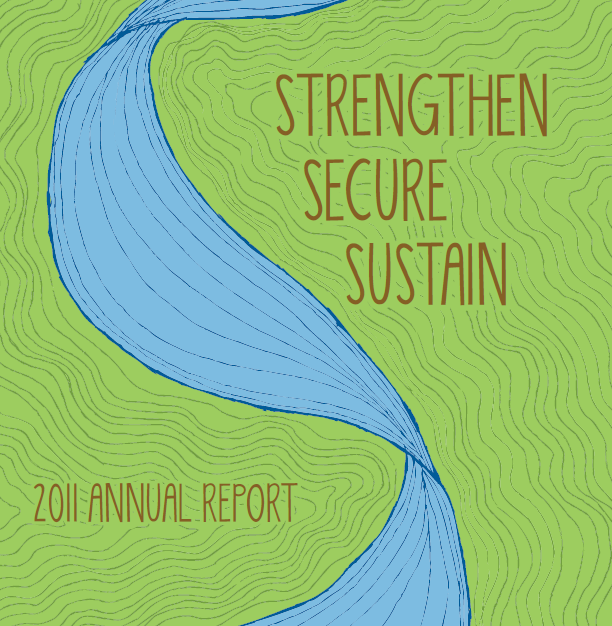Strengthen, Secure, Sustain
GLOBAL WATER CHALLENGES While economic development continues to pull countries out of poverty, current growth patterns have proven to be unsustainable and inefficient, and are increasing inequality rather than reducing it. The path to sustainable development is inclusive green growth.1 But green growth requires water security2 (that is, the maintenance of an adequate quality and quantity of water) as an input to human and economic development. Water security remains elusive for many countries. At the local level, recent changes in demography and landscape, from urbanization to climate change, have increased the demand for water and, at the same, degraded water supplies. At the global level, ongoing financial, food, and energy crises have amplified local water challenges. Today, 80 percent of diseases in the developing world are preventable because they are caused by unsafe water, poor sanitation, and a lack of hygiene education. The Global Monitoring Report 2010 estimates that as a result of the financial crisis, 100 million people may lose access to drinking water by 2015.3 By 2050, feeding a planet of 9 billion people will require a doubling of current water inputs to agriculture while increasing water efficiency. Much of the population growth will take place in the developing world, with urban populations in Africa and Asia doubling between 2000 and 2030. Another impact of global expansion in poor and emerging economies will be the doubling of energy demand over the next quarter century. In addition, extreme weather will continue to destroy local economies (weather-related losses in 2010 were nearly $48 billion). The ability of developing countries to secure water for industrial, environmental, agricultural, and domestic uses will depend on better management of water resources and more cross-sectoral planning and integration. Many of the world’s largest water systems are shared by more than one country, requiring cooperative water resource management and coordinated investments. The poorest countries also face the largest risks. They have lower capacity to predict and recover from floods and droughts, and they are often the hardest hit by volatile food and energy prices. Water security is part and parcel of building the resilience of these countries to global crises. THE BANK’S RESPONSE The World Bank Group understands that water is at the core of poverty reduction, development, and growth. The Bank’s 2003 Water Resources Sector Strategy already described some of the current water challenges and prescribed steps the Bank could take to remedy the situation, including efforts to integrate water with energy, climate, agriculture, land use, and overall economic development. This was reaffirmed in the 2010 Mid-Cycle Implementation Progress Report (MCIPR) for the 2003 strategy (“Sustaining Water for All in a Changing Climate”). Responding to the continuously changing landscape and based on these strategies, the World Bank is planning to develop a new framework for water in 2012, to prioritize and focus its efforts on the most important and new challenges. The implementation of these strategies is reflected in the breakdown of the Bank’s water portfolio. In 2011, lending approvals for water by the World Bank stood at $7.5 billion, up 30 percent from 2010. Lending to water resources management totaled $1.76 billion.4 Of total annual water lending, 53 percent was for water supply and sanitation, 13 percent for irrigation and drainage, 24 percent for hydropower and 10 percent for flood protection. Steady lending levels in these areas demonstrate a consistent demand from client countries for Bank support. Despite these commitments, the demand continues to grow and a broader response is required. Traditional approaches need to be adapted to respond to the growing complexity of the water sector. Innovation needs to be promoted, bringing new ideas, research, and analysis to the table. The linkages between water and other sectors (such as food, energy, environment, and health) call for the mainstreaming of waterrelated analysis in these sectors to help countries make informed decisions about strategies, plans, and investments for a more water secure future.
